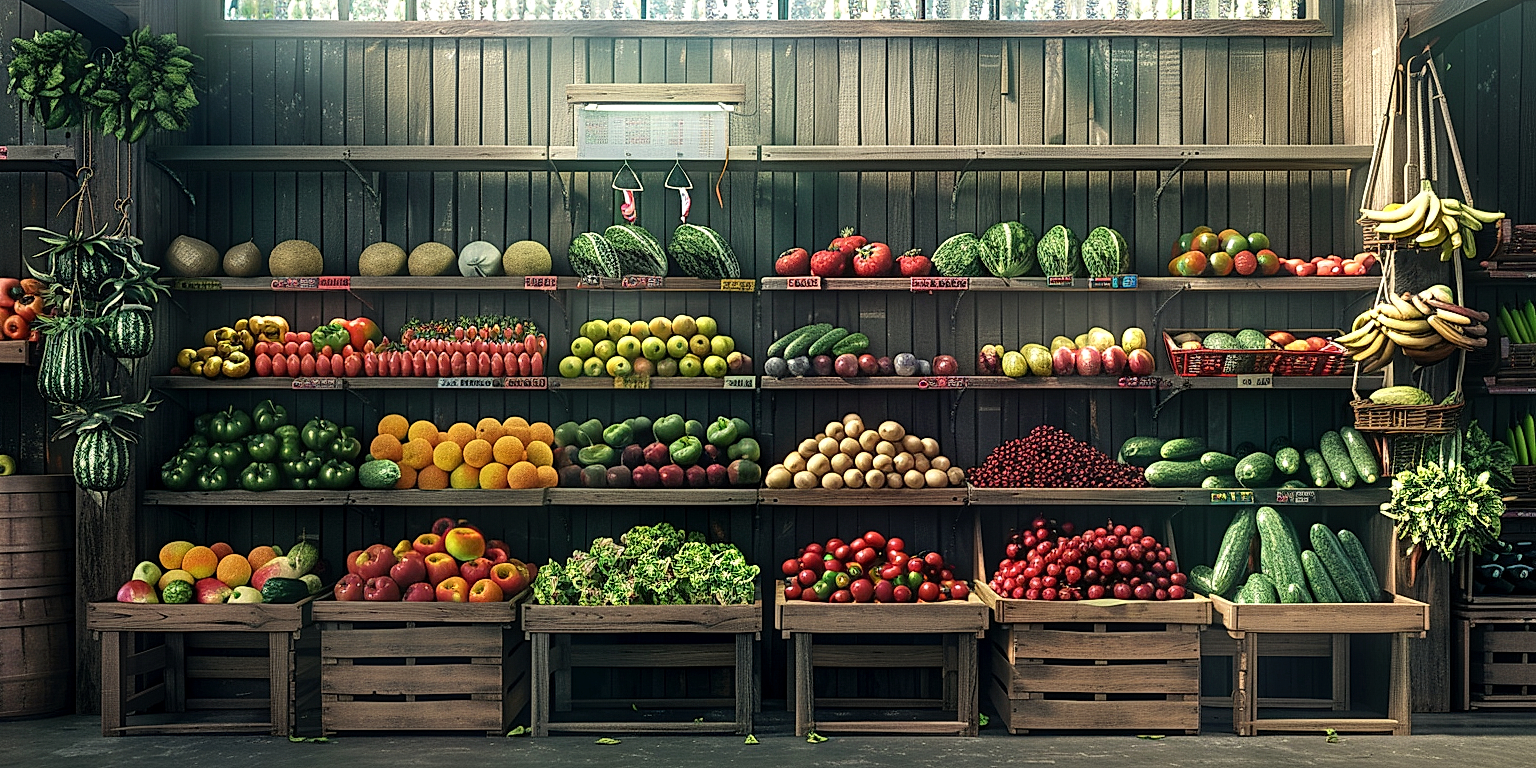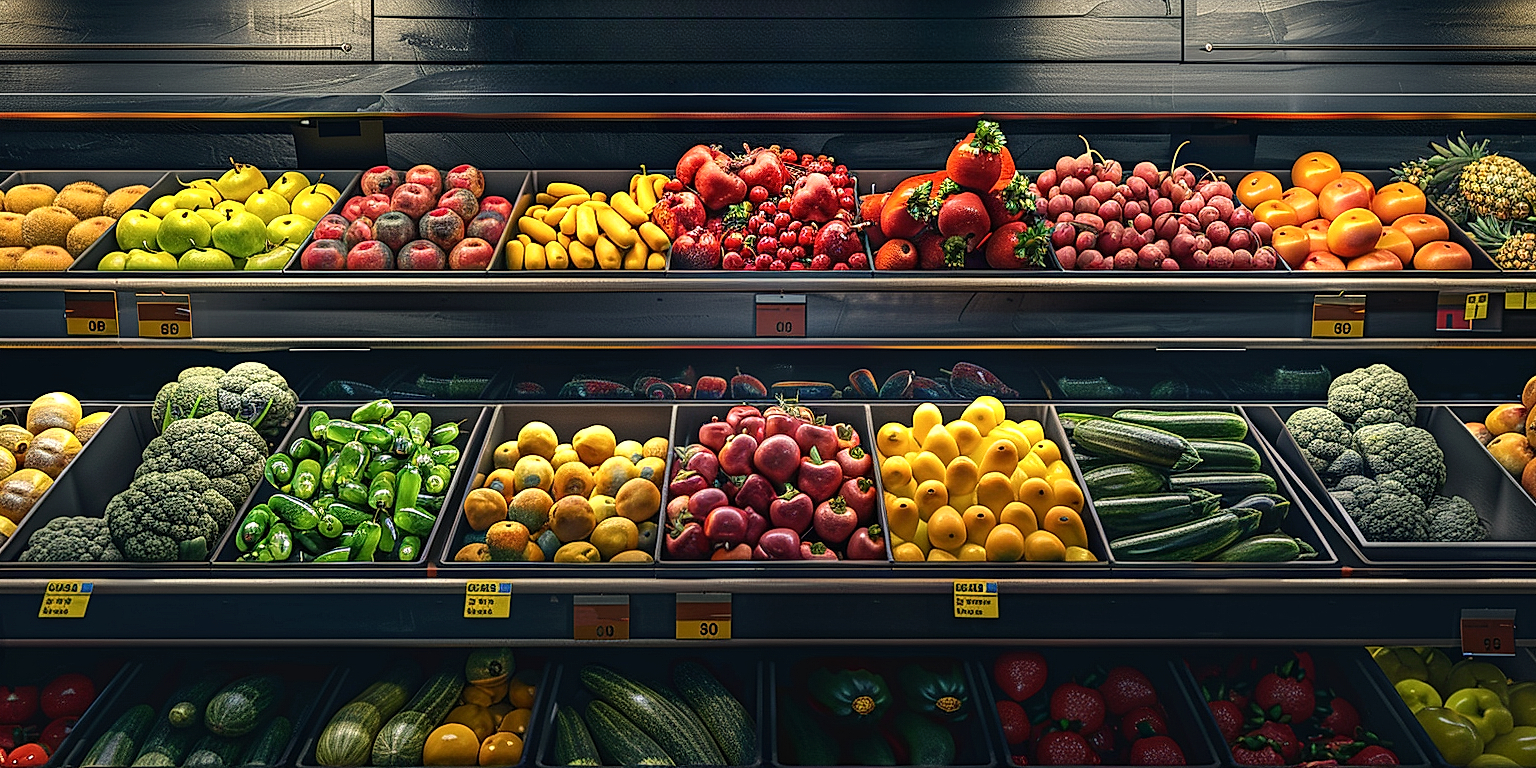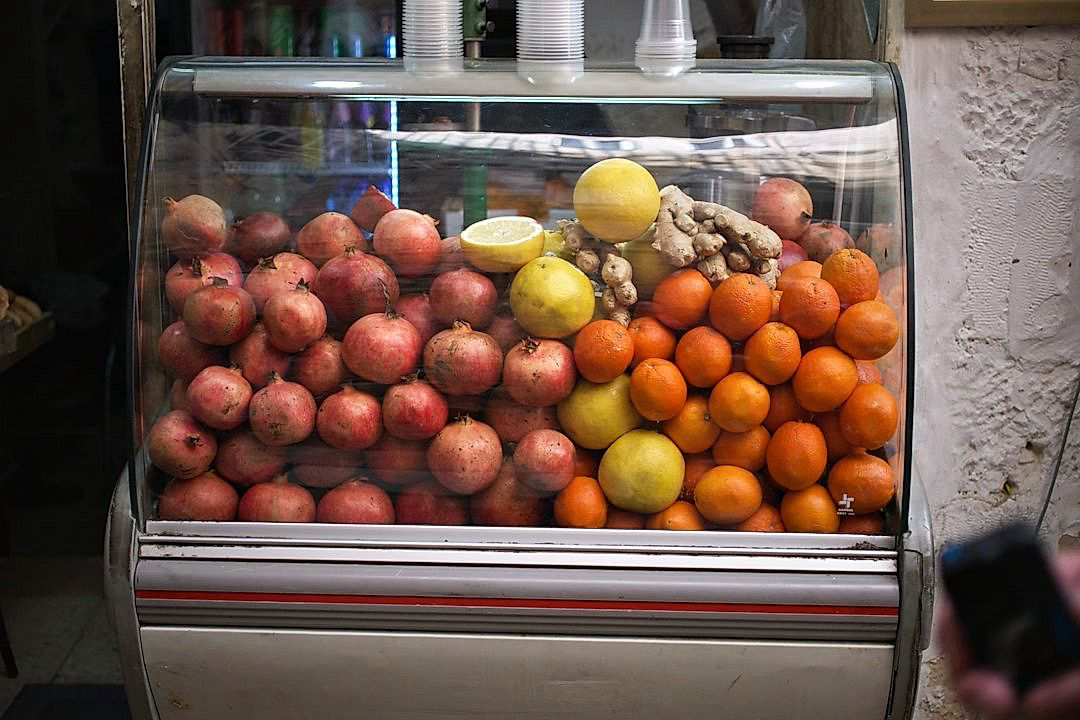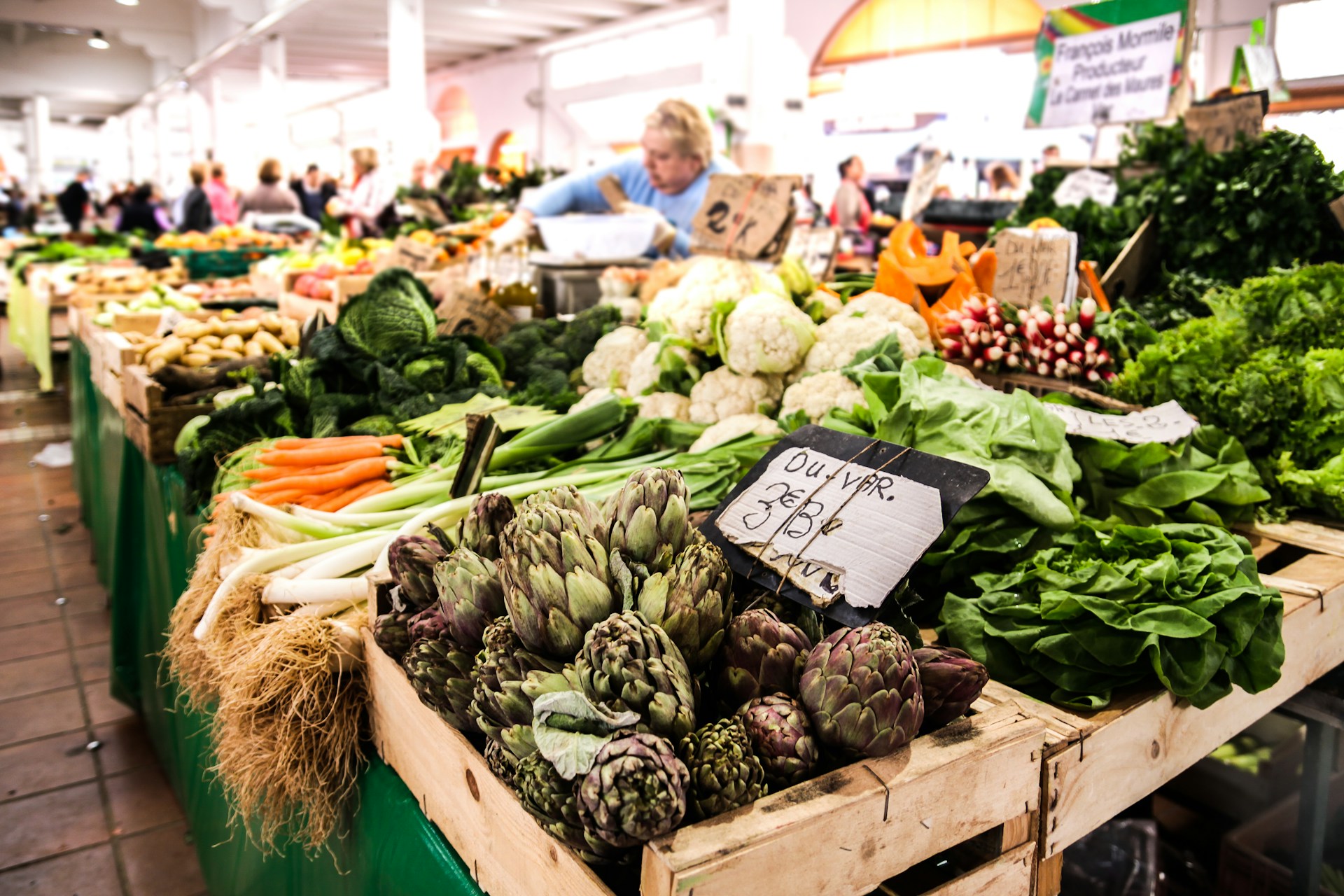As the retail industry becomes increasingly competitive and customer-centric, businesses aim to optimize their approach to maximize sales.
Particularly in the produce sector, the aesthetics and appeal of the displayed products play a pivotal role in influencing purchasing decisions.
Dynamic merchandising has emerged as a core strategy to optimize product display and improve sales performance.
This practice involves constant refreshes, repositioning, and adjustment of product presentations to keep the retail environment engaging.
Understanding these techniques is crucial, given the fast-paced, ever-changing nature of the retail sector.
The following article discusses these strategies in detail and provides insights into how they can be effectively implemented.
Contents
Techniques For Dynamic Merchandising In Produce Retail
1. Implementing seasonal produce displays
Dynamic approaches to merchandising in produce retail can extensively include implementing seasonal produce displays.
The changing seasons throughout the year provide a natural ebb and flow of products that can be highlighted in-store, creating a continually refreshing atmosphere for shoppers.
This approach can be an effective tool not only to leverage the natural appeal of seasonal fruits and vegetables but also to keep displays lively and appealing throughout the year.
Seasonal displays can feature fresh, appetizing fruits and vegetables that not only attract shoppers visually but also serve the practical purpose of highlighting the most favorable produce from a current harvest period.
This can illuminate for customers the items that are likely to hold the best value and taste during a particular time of year.
No matter the season, there’s a unique opportunity to display fresh, high-quality produce that’s at its peak, enhancing both the shopping experience and perceived product value.
Moreover, seasonal displays can also appeal to customers’ desires to eat locally and sustainably, by emphasizing produce from local farms that’s fresh and available.
Integrating information panels or tags next to the produce, sharing details about the local farm or farmer who grew the produce can create a connection between the consumer and the source of their food.
Additionally, incorporating information about the health benefits or special nutritional value of the produce in season, can further intrigue and educate customers in making healthier choices.
Creating displays that celebrate holidays and community events can seamlessly align well with the seasonal produce and uplift customers to make delightful associations with the in-season items.
Using bold colors and attractive design elements in display areas can increase customer engagement and the overall success of the display.
Proper lighting can also create a significant impact and highlight the freshness and appeal of the display.
Offering free samples of ripe, delectable fruit from your seasonal display can stimulate immediate purchases and inspire customers for return visits.
An attention to detail on factors affecting the layout, color and texture can create versatility and novelty in influencing purchase decisions.
A continual reshuffling and redesigning of these consumer hotspots can keep the shopping experience lively and sustain consumer interest in exploring new items.
Overall, implementing seasonal produce displays can be a creative and dynamic merchandising tool that enhances customer engagement, promotes fresh and localized produce and increases overall sales.
2. Leveraging Cross-Merchandising Strategies
In the world of retail, cross-merchandising stands as a significant strategy that every retailer should embrace.
It involves the smart placement of complementary items close to each other to encourage consumers to purchase more products.
This technique can be amazingly effective in a genre-specific store, like a produce retail store.
For instance, placing a dip sauce next to a set of fresh veggies can subliminally encourage customers to purchase both items.
Furthermore, cross-merchandising strategies can improve the shopping experience owing to the ease of locating complementary items.
Cross-merchandising adds more value to the customer’s shopping experience by offering a one-stop solution.
When successfully deployed, it can make your store more appealing and organized which eventually leads to insistence purchases.
This strategy can work like a ripple effect – the purchase of one product leading to the purchase of another complementary product.
It’s all about understanding the behaviors and needs of the customers which can, in turn, increase the product’s visibility and sales.
It involves defining the sales space in such a way that it can stimulate impulse purchases.
The practical implementation of cross-merchandising can generate increased sales and brand awareness for your products.
Moreover, it allows retailers to innovatively display their products which make the customers’ shopping journey more interesting.
Also, boosting the impulse buys has always been an important aspect of enhancing retail sales.
It’s not merely about increasing the overall sales, but also about expanding the retail business by attracting more and more customers through well-implemented cross-merchandising strategies.
Hence, cross-merchandising strategies should always be an integral part of dynamic merchandising techniques in produce retail.
Its implementation can surely make a significant difference when it comes to attracting and retaining customers.
3. Rotary Merchandising for Constant Freshness
The aspect of dynamic merchandising that perhaps stands out the most is the implementation of rotary merchandising.
This strategy involves the recurring rotation of products on the shelves in order to maintain the freshness of produce at all times.
Not only does this ensure that customers are constantly presented with fresh, appealing produce, it also helps retailers reduce food waste by ensuring stock gets sold while still in good condition.
The rotation of produce can be executed on a scheduled basis, ensuring consistency and allowing customers to anticipate when their favorite items will be freshly stocked.
Rotary merchandising requires meticulous planning and consistent execution to be effective.
This method requires a well organized inventory system to keep track of items’ shelf life.
This will help identify which products need to be placed at the front of the shelves for quick sale and not end up causing excessive spoilage and loss.
For a retailer, developing a program that ensures the constant rotation of produce can be a key factor in maintaining customer traffic and sales.
Customers generally prefer to shop at stores that consistently offer fresh products.
As a result, a strong rotary merchandising system can make a store noticeably attractive to consumers and boost its reputation for quality and freshness.
One of the most significant advantages is that it keeps the visual aspects of the store constantly changing and appealing.
The dynamic visual impression created by the rotation can act as a psychological trigger, encouraging customers to buy more.
Incorporating rotary merchandising in an effective manner can transform a store into an entity that continually provides customers with new shopping experiences and options.
Ultimately, rotary merchandising goes beyond maintaining freshness – it’s a holistic approach towards enhancing the entire shopping experience.
Every retailer aiming for enhanced customer satisfaction and retail success should consider the inclusion of this vital technique in their merchandising strategy.
4. Providing Lucrative Discounts on Bulk Purchases
Offering lucrative discounts on bulk purchases is an effective strategy in dynamic merchandising in retail produce.
This tactic encourages consumers to buy in larger quantities, driving increased sales for the retail store.
Discounts incentivize customers to make bulk purchases because of the significant cost savings that they stand to gain.
Moreover, bulk discounts not only boost immediate sales, but they also help in establishing a regular customer base that prefers to shop in your store for their bulk items due to the excellent prices.
Therefore, the provision of attractive discounts on bulk purchases serves as a powerful motivator for customers to buy even more.
By purchasing in bulk, customers get more value for their money, which is always a motivating factor in any purchasing decision.
Therefore, retailers must design attractive discount offers that appeal to different customer segments, enticing them to buy products in bulk.
The concept of economies of scale is something that most customers understand and appreciate.
The higher the quantity of the product purchased, the lower the price of each individual item – this notion is the basis of bulk purchasing discounts and it’s a proven benefit that customers respond to favorably.
Thus, dynamic merchandising is all about making customers feel they are getting the best deal possible.
Moreover, discounts on bulk purchases should not be only about price reduction, but value addition as well.
The focus should be on providing qualitative value, and not just a mere reduction in selling price.
When customers perceive the additional value provided to be real and tangible, their loyalty to the store is likely to increase.
Useful add-ons, freebies, services should all be considered when structuring a lucrative discount offer for bulk purchase.
A unique mix of bulk purchasing discounts and other value addition strategies, presented innovatively and attractively, can achieve great results in the profit margin of the retail store.
This technique would propel the retail store towards success, dominating its competitors in the marketplace.
5. Incorporating interactive tasting events
The concept of interactive tasting events is not new in the produce retail sector.
It has been used effectively by many retailers worldwide to boost their sales and secure brand loyalty.
These tasting events provide consumers with a unique shopping experience right from sampling fresh produce to making an informed purchase decision.
Successful implementation of interactive tasting events calls for extensive planning and organization on the part of the retailer.
“` Surprisingly, customers are more inclined to purchase a product after they have tasted it, establishing a personal connection with the product. “`Typically, it involves setting up a dedicated space within the retail store equipped with necessary facilities such as tasting tables, cutlery, and napkins, among others.
Depending on the chosen theme, these tasting events may feature various products, ranging from novelty fruits and vegetables to organic produce.
Moreover, retailers can couple these events with live demonstrations or recipe contests, thereby heightening customer engagement and deepening customers’ understanding of the product.
Having knowledgeable staff at hand who can answer customers’ queries regarding the taste, texture, or origin of the product is crucial to the success of the event.
Further, it can serve as a platform for retailers to get valuable feedback about their products directly from the consumers.
This information can be instrumental in refining the product offering or tweaking the merchandising strategies to cater effectively to customer preferences.
“` Interactive tasting events not only drive sales but also create an exciting ambiance in the store, making the customers’ shopping journey more enjoyable. “`However, retailers need to ensure that they adhere to health and safety regulations during the event to provide a safe tasting experience to the customers.
Lastly, advertising these events well in advance can draw in more customers, therefore creating a win-win situation both for the retailer and the consumer.
Nevertheless, the ultimate goal should always be to provide a memorable and value-added shopping experience through these interactive tasting events.
The Bottom Line
Retail businesses can significantly bolster their sales and increase consumer satisfaction by embracing innovative techniques in arranging and promoting their products.
Setting up seasonal produce displays can engage shoppers by highlighting fresh goods and providing a sense of novelty.
Likewise, cross-merchandising strategies can enhance the shopping experience by conveniently grouping related items.
A rotating merchandise strategy not only sustains freshness but also fosters a perception of variety for returning customers, making every visit a new opportunity for discovery.
Encouraging bulk purchases through attractive discounts can stimulate larger orders, thereby driving revenue growth.
Ultimately, integrating interactive tasting events can forge a stronger bond between products and consumers, simultaneously promoting sales and enriching consumers’ shopping experiences.
In essence, retail businesses have several strategies at their disposal to ensure the constant optimization of their performance and consumer satisfaction.




